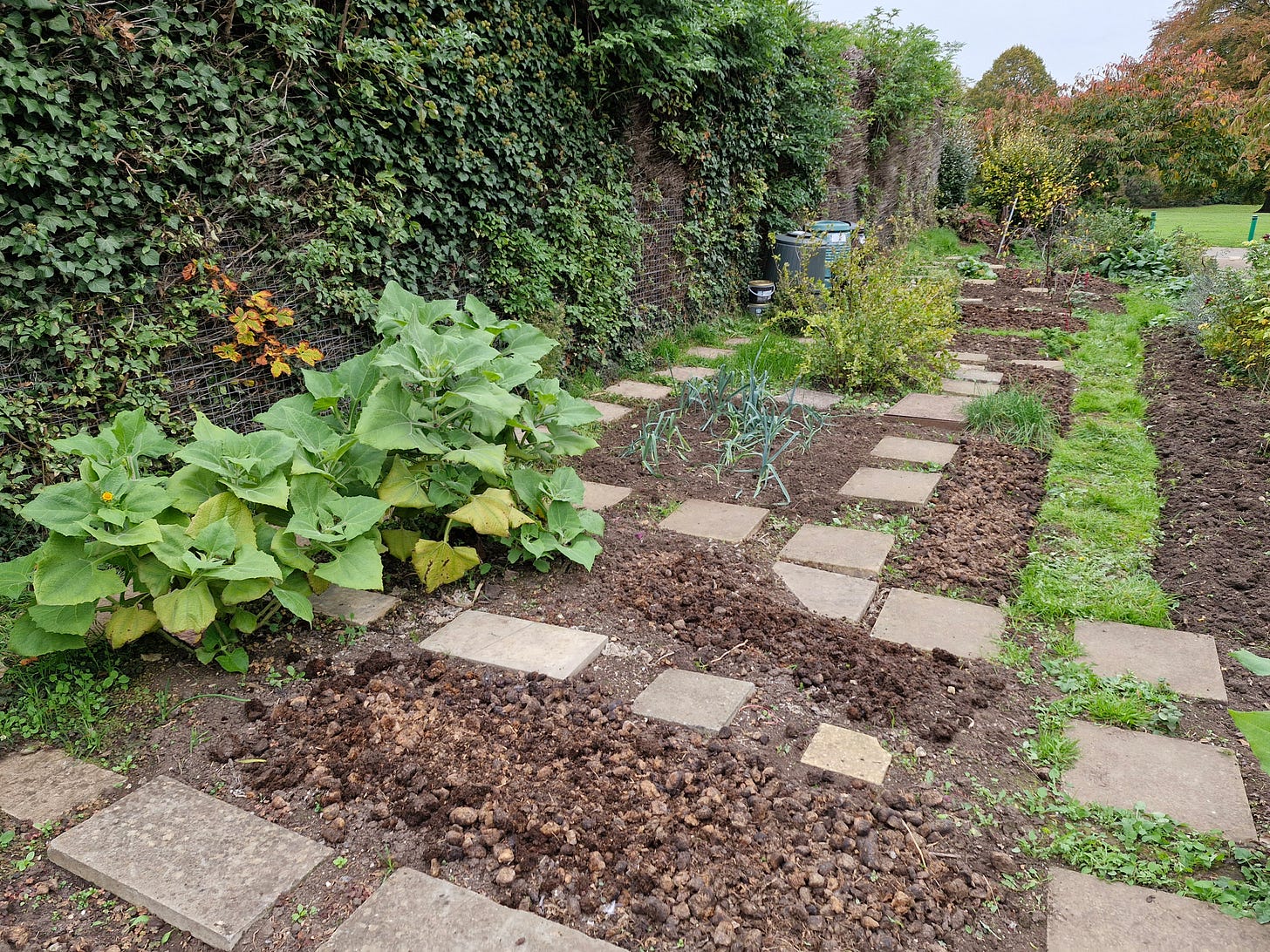One of the reasons we publish reports of the work sessions at our local community vegetable and fruit plot is to give you an idea of just what’s involved in a grassroots project like this. We want to be honest and open about the work that has to be done and also, the highs and lows that come with growing vegetables and fruit in a public park in full view of the community. So in the spirit of openness and transparency, below is the write up – first published on the Keynsham Community Veg Plot in the Park Facebook page – of the work session we had last Wednesday:
It was a very productive work session at the plot today:)
Firstly, garlic and broad beans have been planted, each having a bed each. The aim is to try and keep crops going all year round on at least some of the beds to boost the overall productivity of the plot.
Secondly, more work has been done on the paths. They’re not perfect but, they’re a lot better than they have been for a while, particularly the back path running past the compost bins.
Thirdly, more weeding has been undertaken. It would seem that the weeds haven’t read the memo about it being autumn and time to lay low so, physical intervention was needed:) Hopefully, they’ll start to get the message...
Lastly, the sacks of horse manure which were sitting along the back fence for the summer into the early part of this autumn have finally been emptied, with the contents being distributed on a number of the beds. It’s being left on the surface so that the weather and the worms can do their bit in breaking it down into the soil underneath.
It was tiring and our shoulders ache a bit but, looking at the plot after we’d finished, we can justifiably be pleased with what we’ve done.
The next official work session on the plot is on Saturday 1st November, starting at 2pm. Any extra help will be greatly appreciated:)
Bringing about change at the grassroots is hard work. We’re not going to pretend it’s anything but. There are high points where we think we’re moving forwards but also, there are the lows where doubts and questions about what we’re doing and why we’re doing it creep in. There are also the aching muscles and joints after a particularly hard session. Moving sacks of horse manure around is bloody hard and also, dirty work! This is a price we’re willing to pay for a project that not only provides food for the community but also, gets people to start asking questions about where our food comes from, and how can that be made more sustainable.
A friend of ours remarked that we need to think about how we persuade people to swap the seeming convenience of buying food at a supermarket for growing at least a proportion of what we need ourselves. How can we persuade them that the hard graft, the aching limbs that come with it, and the time involved are worthwhile sacrifices in the bid to de-centralise and localise food production? A lot of people lead very busy lives – finding the time to get involved in a long term community project that requires a regular, sustained commitment isn’t easy. Many people are so tired and stressed out from work, it’s understandable that all they want to do at the weekend is just chill out. The problem being that the weekend is the only time they get to do life admin which means that the time for chilling out is limited. How can we persuade people that weeding, picking out stones from the soil and spreading horse manure over vegetable beds is in fact, therapeutic?
We’ll be honest and admit that there are no easy answers to any of these questions. All we know is that before a food security crisis hits or in an increasingly possible dystopian future, access to food depends on having the right social credit, we need to be well on the way to creating a de-centralised and localised food production system. One that bypasses both the state and the mega-corporations that the state serves. What we’re starting to realise is that simply using the fear of this kind of dystopian future in order to get people to start a vegetable and fruit growing plot in their neighbourhood isn’t going to work. We have to find a way of selling a positive vision about slowly withdrawing from a toxic system and taking control at the grassroots. We have to start doing a much better job of this than we have done so far.
To conclude, we’ve raised a fair few questions but haven’t really answered any of them. We hope this piece will spark a discussion about how we can persuade people that the hard graft of starting to take control of how their food is sourced is worth the sacrifice. Any constructive thoughts and suggestions will be more than welcome:)



